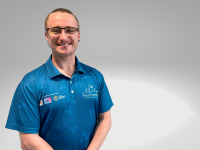 |
Michael Beaven
Award: ANZSRS ASM Travel Award
Award Finalist: ANZSRS New Investigator Award
Presentation: Physiological responses to exercise in survivors of preterm birth
|
|
About the research: For those who survive preterm birth, ongoing lung problems throughout life are common. A lot of what we know about the lungs of the “born-too-soon” comes from assessments conducted at rest in either laboratories or clinical settings. Whilst important, valuable insight can come from assessing the lungs (and other organs) under stress, such as exercise. Cardiopulmonary exercise testing (CPET) offers a way to do this, and tests how the lungs, heart, and muscles work together as exercise gets harder. VO2max, or the peak oxygen usage in CPET, tells us how fit we are, and is related to health outcomes throughout life. We performed a systematic review to synthesise the current research, and found that problems in the lungs, heart, or muscles exist during exercise in those born too soon, compared to term-born peers. We also found that VO2max declined faster with age in the preterm group. This information helps to tell us that preterm birth is associated with reduced fitness, and that multiple systems are impacted. Ultimately, this advocates for further research using CPET to improve our knowledge on why preterm-born individuals are less fit than their healthy peers, bringing us closer to improving the health of those born preterm.
|
 |
Dr Laura Coleman
Award Finalist: Ann Woolcock New Investigator Award
Presentation: Personal network inference identifies children at risk of recurrent wheezing
|
|
About the research: An area of interest for the treatment and management of childhood wheezing and asthma exacerbation is identifying children at risk of developing persistent asthma, as opposed to children who will experience one or more wheezing episodes caused by respiratory infections that stop once the child is older. We investigated the factors that influence future risk of asthma by measuring gene expression in blood collected from children presenting to hospital with wheeze and asthma symptoms. We divided the children into sub-groups based on shared gene expression network patterns, and identified three sub-groups based on the similarity of their individual networks. One of those sub-groups had faster time to re-presentation to hospital with a respiratory exacerbation and increased risk of having persistent exacerbations. Robust expression of anti-viral genes reduced the risk of recurrence and persistence, whereas network patterns related to inflammation were associated with increased risk of recurrent wheeze and persistent exacerbations. Overall, immune profiling can be used to predict future risk of respiratory exacerbations in children with acute wheeze.
|
 |
Rebecca WaThe Kidsnson
Award Finalist: Ann Woolcock New Investigator Award
Presentation: Aberrant nasal epithelial responses to Rhinovirus in paediatric acute wheeze
|
|
About the research: Rhinovirus is the most common virus in children presenting to the emergency department with acute wheeze and is associated with the development of asthma. Currently the reason for this is unknown. The first point of contact for rhinovirus are the cells that line the airway, the airway epithelium. However, up until now there has been no pre-clinical model to study interactions between rhinovirus and the airway epithelium of children with acute wheeze. We established a three-dimensional model of nasal epithelial cells collected from children presenting to the hospital emergency department. This model showed underlying vulnerabilities and aberrant responses to rhinovirus in the airway epithelium which may contribute to the severity and frequency of acute wheeze in susceptible children. Now that this model of rhinovirus infection in paediatric acute wheeze has been established, it can be used as a platform for further research into infections and therapeutic intervention. This will bring us one step closer to improving the quality of life of children with acute wheeze and asthma.
|
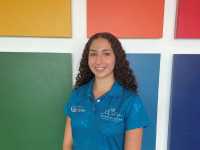 |
Julia Casella
Award: TSANZSRS ASM Travel Grant
Presentation: Lung clearance index is elevated in children and adolescents with bronchiectasis
|
|
About the research: Bronchiectasis is a chronic lung disease that often starts in childhood. The current gold standard lung function test (spirometry) is not sensitive to early disease in childhood. We aimed to determine if the lung clearance index (LCI) from the multiple breath washout test is sensitive to early disease. We found that LCI is significantly elevated (worse) in children with bronchiectasis compared to healthy controls and is more sensitive than spirometry outcomes. These findings support LCI being used in the clinical monitoring of bronchiectasis in childhood.
|
 |
Emma Catchpole
Award: TSANZ ASM Travel Grant
Presentation: Development of a new airway repair therapeutics platform for childhood asthma
|
|
About the research: Asthma affects about one in 10 Australians and is one of the most common reasons for paediatric hospital presentations and admissions. Current treatments like bronchodilators and corticosteroids only target asthma symptoms and some children continue to experience asthma throughout childhood and later life. We have previously shown that children with asthma have poor repair capacity in their airways which drives the recurrence of symptoms. Our team has discovered a new class of drugs that could improve airway repair, potentially reducing asthma attacks and hospital visits. In this study, we tested 122 drug compounds, some already used for other conditions and some newly created. Out of these, 42 compounds showed positive results by speeding up cell repair without any toxic effects to cells. This discovery offers promising avenues for further research to develop treatments that could enhance the repair of airways and potentially alleviate the impact of asthma on children and their families.
|
 |
Dr Jane Choi
Presentation 1: Developing a model of extremely preterm ventilated lambs
|
|
About the research: This presentation describes a ventilated lamb model with increasingly immature lungs to enable the assessment of immature organs equivalent to extremely preterm human babies. By optimising the delivery of maternal steroids to maximise lung maturation and providing lung-protective ventilation, we were able to deliver lambs as early as 76% of pregnancy. More immature lambs showed a progressive worsening of lung function and gas exchange, representative of respiratory distress commonly observed in human preterm babies in the hospital.
Presentation 2: Creatine supplementation attenuates pathogen-induced airway inflammation in pediatric primary airway epithelial cells
About the research: This presentation describes the effect of creatine supplementation on airway cells derived from children. Creatine is a popular nutritional supplement with anti-inflammatory and antioxidant benefits, and we investigated whether creatine supplementation could attenuate injuries caused by airway inflammation.
|
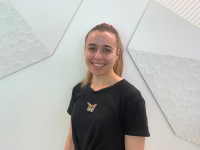 |
Talya Conradie
Presentation 1: Exploring the lung-associated virome utilising shotgun metagenomics data
|
|
About the research: Respiratory viruses have a significant impact during childhood and upon the health system through respiratory diseases and infections. To learn more about these viruses in our lungs, we gathered information about their genetic material from public sources and used new powerful tools to analyse this data. Our research found that the mix of viruses in the lungs is different between healthy people and sick people, children and adults is different, while certain diseases showed unique sets of viruses in the lungs. This study, using existing information, has for the first time revealed the types of viruses in the lungs of healthy and sick people. This knowledge will help us better understand how viruses affect people with different health conditions and of different ages.
Presentation 2: The tuberculosis lung virome of 18th century mummified lung tissue
About the research: Exploring viruses in lung tissue from mummies is like looking into the past. These studies give us important information about how people got sick from viruses in the past and how it affected them. In this study, we used new computational tools to identify the different types of viruses present in individuals infected with tuberculosis 200 years ago, and how this could associate with tuberculosis patients today. For this purpose, we obtained data from a previous study and investigated the lung viral community in samples obtained from mummified remains from people who died 200 years ago. We reanalysed this data using a newly developed software designed to find viruses and looked for evolutionary relationships to identify viral species. This study reveals new viruses associated with tuberculosis infection in individuals who lived 200 years ago. It also teaches us more about how bacteria and viruses work together and how they affected the health of people long ago.
|
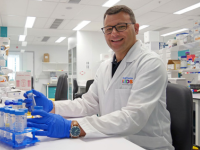 |
Associate Professor Anthony Kicic
Presentation: Use of epithelial cell models to investigate phage therapy
|
|
About the research: Once phages are isolated and purified their safety should be tested at the preclinical level. This presentation describes how isolated phages specific for pseudomonas and staphylococcus have been identified as safe for human use using three-dimensional models of the human airway.
|
 |
Dr Kak-Ming Ling
Presentation: Preclinical safety assessment of bacteriophage therapy using primary airway epithelial cells
|
|
About the research: We aimed to investigate whether bacteriophages, viruses that target bacteria, could serve as a viable alternative to antibiotics for treating bacterial infections in the airways. Our objective was to ascertain the safety of these viruses for airway use. We collected cells from pediatric nasal surgeries and cultured them in the laboratory, subjecting them to phage exposure. Our findings revealed no adverse effects of phages on the cells, indicating phage therapy's potential safety and efficacy in addressing lung infections.
|
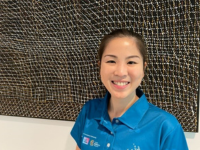 |
Dr Gloria Lau
Presentation: Culturally-informed strategies for chronic wet cough in multiple Indigenous communities
|
|
About the research: Chronic wet cough is common among First Nations children but is often unrecognised or undertreated. Left untreated, chronic wet cough can lead to permanent lung damage. We can improve children’s health if chronic wet cough is detected early and managed well in primary care. In 2018, we implemented a program in Broome which improved chronic wet cough outcomes through health promotion, clinician training, and practice changes. However, given First Nations communities' cultural and geographical diversity, what was effective in one may not be elsewhere. In this study, we studied the barriers and facilitators to detection and management of chronic wet cough in First Nations children in primary care in seven communities across three states and territories in Australia, and implemented the strategies at each community. This study found that strategies for timely detection and management of chronic wet cough are broadly consistent across cultural and geographical contexts, although each site had unique characteristics that required tailored strategies. This presentation will discuss the study results.
|
 |
Renee Ng
Presentation: Establishing preclinical safety and efficacy profiles of bacteriophage Kara-mokiny 3 targeting Pseudomonas aeruginosa
|
|
About the research: The presentation is about using a 3D lung cell model in the lab to determine the safety and effectiveness of Kara-mokiny 3, a bacteriophage to reduce viable Pseudomonas aeruginosa in the airways.
|
 |
Associate Professor Kathryn Ramsey
Presentation: Lung clearance index predicts disease progression in children with cystic fibrosis
|
| About the research: The lung clearance index (LCI) is a lung function outcome that measures how evenly gas mixes in the lung. We have shown previously that LCI correlates with the extent of structural lung disease in children with cystic fibrosis (CF). We aimed to determine whether LCI can predict future lung disease progression. Using longitudinal data in over 100 children with CF, we found that LCI in childhood could predict future lung function, structural lung disease, hospitalisations, and medication changes in the following one, two, and three years. These findings support the use of LCI to clinically monitor early lung disease progression in children with CF. |












